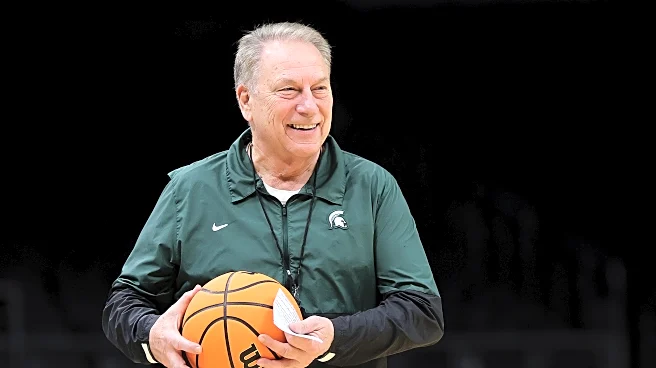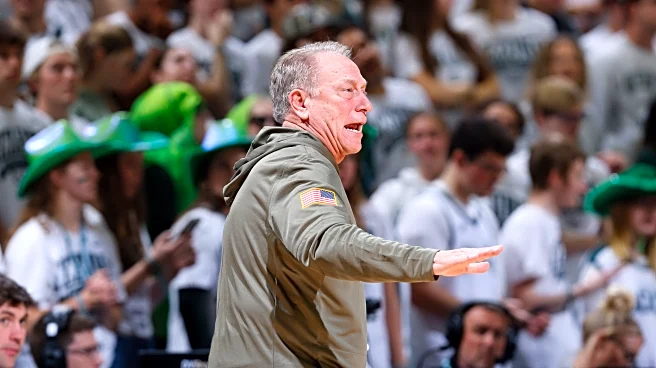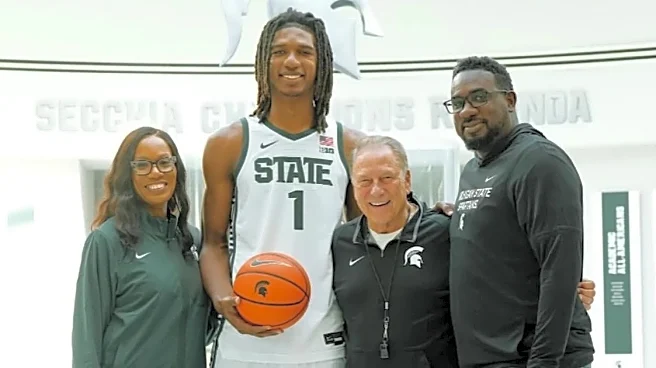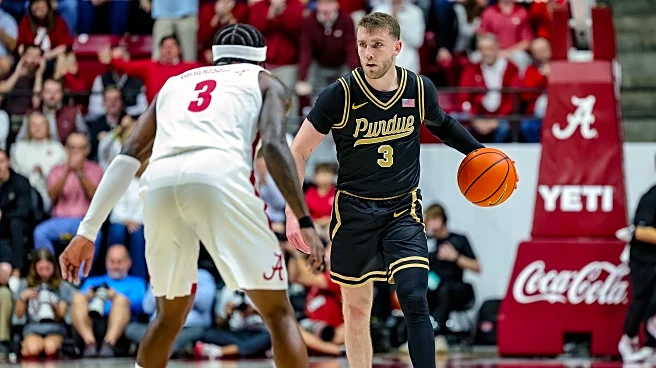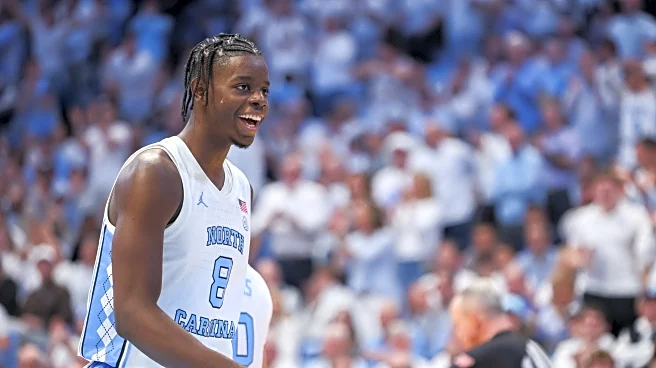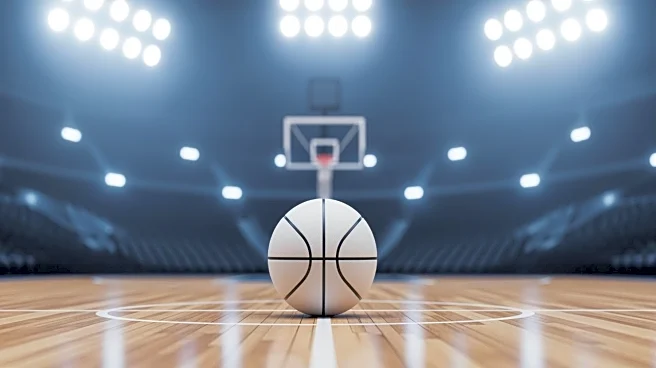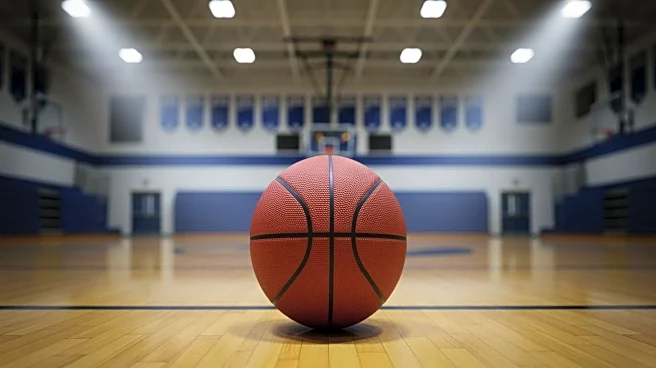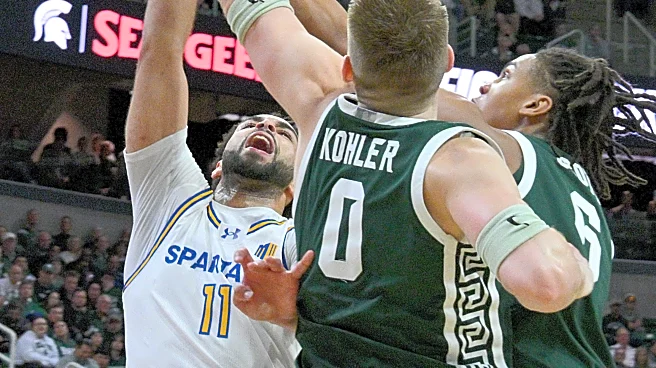With the addition of EthanTaylor on Friday, Michigan State’s 2026 four-member basketball recruiting class moved to #1 in the nation, according to 247Sports. Three athletes have already signed, and Taylor will hopefully have his paperwork in soon to make it official.
The class is well diversified across the positions with point guard Carlos Medlock Jr., shooting guard Jasiah Jervis, power forward Julius Avent, and the 7-foot center Taylor.
Interestingly, Medlock is the only player with ties to Michigan.
He’s from Wayne but is currently playing for Link Academy in Branson, MO. Taylor, from Shawnee, KS, is Medlock’s teammate at Link. Jervis and Avent are both from metropolitan New York City.
This class indicates two things:
- Tom Izzo, at age 70, still has it and top players want to play for him.
- Michigan State must have the NIL resources, at least for basketball, to land talented players like this.
However, rather than try to figure out the NIL space, let’s just take a closer look at each of these players, who are summarized in the table below. We’ll also dive a little deeper into each player’s scouting report, courtesy of 247Sports’ Director of Basketball Scouting Adam Finkelstein.

Carlos Medlock Jr.
Medlock was the first of the four to commit to MSU, doing so way back in July. According to Finkelstein:
Medlock may be undersized, but he’s extremely talented and creative with the ball. He has total command of his handle, can play at full speed with complete control, and can break down defenders almost at will. He’s got an assortment of acrobatic lay-ups and clever tricks in the paint, but can also rise-up and dunk on unsuspecting defenders. When the game slows down, he’s still almost impossible to corral as he’ll split ball-screens and create space for tough pull-ups or step-backs off the dribble.
The biggest adjustment for Medlock could be adapting to less offensive volume and freedom. While he put up nearly 21 points per game in the 3SSB season, everything revolved around him. He’s wired to score first and foremost and create for others as a consequence of drawing second defenders, but rarely in a situation where he’s a pure distributor (2.7 assists to 2.1 turnovers). He’s also a more comfortable shooter off the dribble than the catch at this point (39% 3pt off dribble vs. 29% unguarded catch-and-shoot).
Defensively, he’s got the speed and quickness to be a pest. He can get underneath opposing ball-handlers and create a lot of pressure (1.9 steals), but his size will become more of a limitation as he moves up in level, both from the standpoint of being less switchable and less able to disrupt bigger guards once they’re able to get to their spots.

As Finkelstein points out, it will be interesting to see how Medlock’s size (5-11, 165) plays out at the Big Ten level.
It could also be fascinating to see Medlock’s role if Jeremy Fears is still with the Spartans next season. Fears worked on his shot a great deal over the summer but remains a pass-first point guard in looking to create shots for his teammates. Conversely, at Link Academy, Medlock is expected to score first. How these two run Izzo’s offense, and how Izzo utilizes them, might be something to watch next year.
Despite a different game compared to Fears, it appears that Medlock accepts the leadership responsibilities that Izzo expects from his point guards:
“I just want to set the standard… I have to set a standard so they know what’s expected here. It starts at practice, bringing energy, playing hard at practice. So they know they got to play hard.”
Julis Avent
Regarding Avent, Finkelstein offers this:
The first thing that jumps out about Avent is his long and strong frame. He’s powerfully built with mass, definition, and the broad shoulders to support his extreme length. He has adequate positional size at 6-foot-7, but a tremendous 7-foot-3 wingspan and 8-foot-11 standing reach. He’s physical initiating contact and then balanced while absorbing it, on both ends of the floor.
Avent also has some developing inside-out skills. He’s a consistent spot-up shooting threat who can space the floor to the arc and made 38% of his unguarded catch-and-shoot threes during EYBL play. He also made 83% of his free-throws despite a release that doesn’t always look totally natural. He’s not yet at the point where he can reliably make threes on the move or off the dribble, but he can put the ball on the floor, attack downhill given room to accelerate, and has even shown some flashes of starting the break himself. He is also a very good offensive rebounder.
While Avent is long and powerful, he lacks quick twitch. He’s not especially bouncy in traffic, so he compensates with physicality and the ability to use both hands. Defensively, there are some concerns about lateral quickness that could limit his switchability. While he’s a solid area rebounder, he doesn’t offer any real rim protection for someone with his measurables.

It sounds like Avent might be the most raw of the four commits but still possesses a lot of upside, especially if he continues to develop a three point shot. The scouting report also seems to indicate that Avent will contribute more with his physicality than his athletic ability.
Jasiah Jervis

Finkelstein has this to say about Jervis:
Jervis is a shot-maker and scorer with an increasingly versatile attack. His shooting is the first weapon in his arsenal with a compact release and good rotation. He’s blossoming into a movement shooter who can come off screens off the ball, and also has a complimenting pull-up game.
He’s not yet the type of handler who is going to break down a set-defender, but growing into someone who can play some secondary pick-and-roll. He’s very proficient at attacking closeouts and particularly good when he can catch-and-go in space. He plays in straight lines, wastes no motion when attacking the rim, and has a good left hand as a driver and finisher.
Jervis has solid positional size at 6-foot-4, good length with a 6-foot-8 wingspan, and athleticism. He’s very fit with a naturally strong frame that is cut and functionally strong without being bulky. Defensively he’s solid on the ball, projects as being somewhat versatile, but needs to be more aware and responsive rotating off the ball.
Here’s betting that Izzo quickly addresses Jervis’ off ball defense.
Ethan Taylor
Taylor, the Spartans’ highest-rated recruit, gives MSU a true center and has drawn some comparisons to former Purdue big man Zach Edey.
On Taylor, Finkelstein says:
Taylor is a rapidly improving big man with elite physical tools. Measuring at 7-feet with a 7-foot-3 wingspan and a solid frame that is only just beginning to fill-out, he has massive size. But he’s also a good athlete for his size who runs fluidly, gets off his feet powerfully, and even has some agility. He can spin-off contact in the post, rise-up for emphatic power dunks, and be a consistent lob threat. Still, there is room for more physical dominance as he continues to harness his conditioning in order to consistently keep up with the pace of an up-tempo game and learns to be more proactively physical in order to dominate the paint to the extent he’s capable of.
Taylor also has pretty good hands and feet, but the most underrated part of his game is his passing. He can hit cutters from the post and is even starting to show some early flashes of being able to play out of short-rolls. He has a decent enough touch to make 68% of his free-throws, despite a release that tends to come out on the left side of his head with a flatter trajectory.
Defensively, he’s going to be mostly a drop-coverage or “ice” style ball-screen defender, but moves well enough for his size that he should be able to hedge or maybe even occasionally switch at times. He has some big blocks, but could polish his timing and rotations in order to be a more dominant rim protector. Similarly, he’s a good area rebounder (7.4 per game), with the potential to be dominant if he fully asserts himself.
Ultimately, Taylor may be the most physically gifted big man in the class. He’s already made rapid strides and as he continues to get more assertive and aggressive, his impact should only continue to grow.
With Taylor, it sounds like Izzo and his staff will work to bring more physicality and aggression out of him. To his credit, Taylor seems to understand this will happen and is not shying away from it. He had this to say about Izzo and the MSU program:
“Coach Izzo is incredibly passionate, and he really cares about his team and treats the players like his family. He’ll push you to be the best you can be while holding you accountable but also loving on you. The culture he’s created where all the former players come back and work out with the team for ‘Grind Week’ is cool. It says a lot about him as a coach and the staff. The players welcomed me with open arms. The program has been so successful including Final Fours and a national championship.”
Taylor’s addition is obviously massive for MSU. The Spartans won a recruiting battle for a five star player over the likes of Kentucky and Kansas. At least equally important though, even though Jesse McCulloch continues to develop for MSU, the Spartans lose both Jaxon Kohler and Carson Cooper to eligibility after this year so this front court addition will hopefully pay immediate dividends.
Obviously, these days, you never know who will return and who won’t in college basketball. The only thing the Spartans know for sure is that Kohler and Cooper (and Trey Fort, Nick Sanders, and Denham Wojcik) will be moving on after this season. Despite those losses, it’s exciting to imagine what could be if this recruiting class joins forces with Fears, McCulloch, Coen Carr, Cam Ward, Jordan Scott, Kur Teng, and Kaleb Glenn.
Izzo should be able to deliver on his promise made after the 2024 NCAA tournament of getting back to deep runs in the tournament. Last year’s Elite 8 appearance should qualify but perhaps there is even more to look forward to in the near future.
